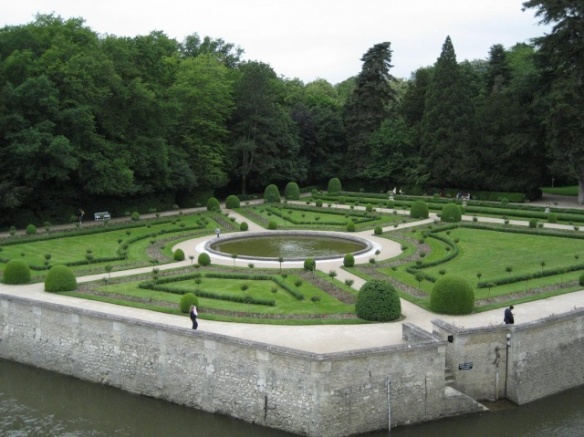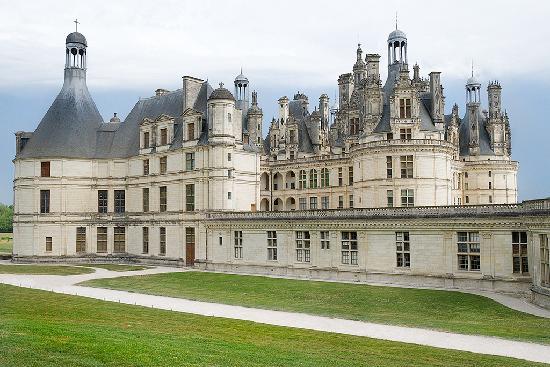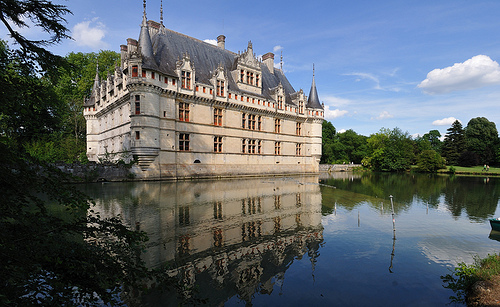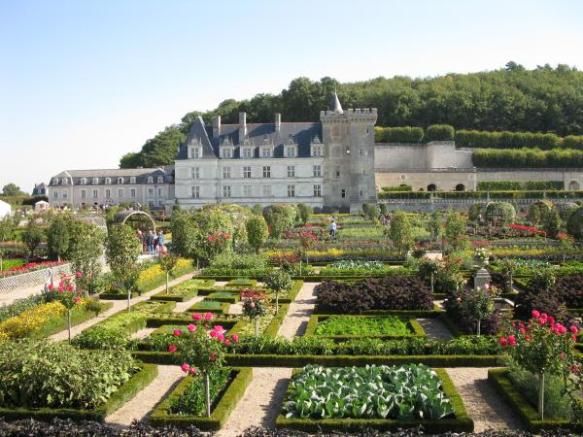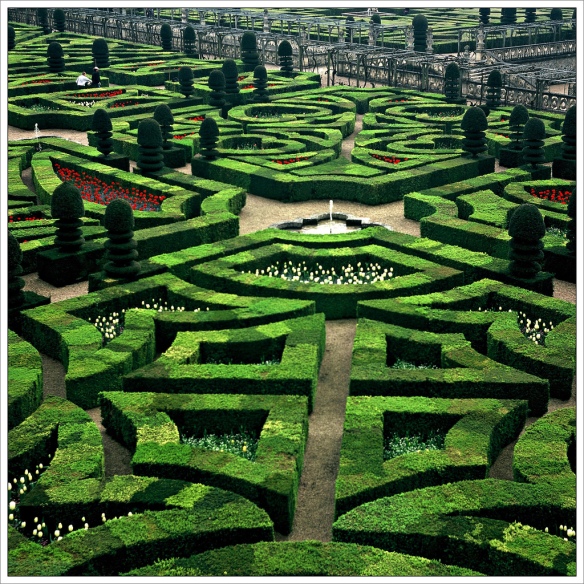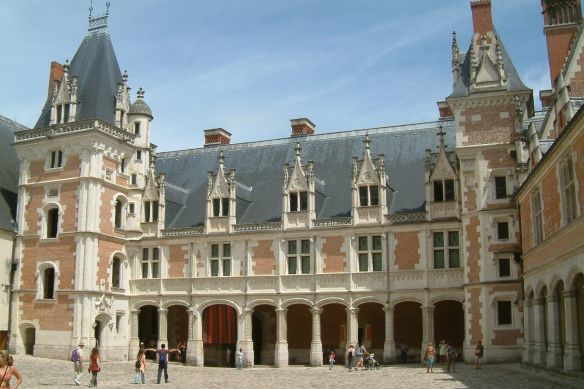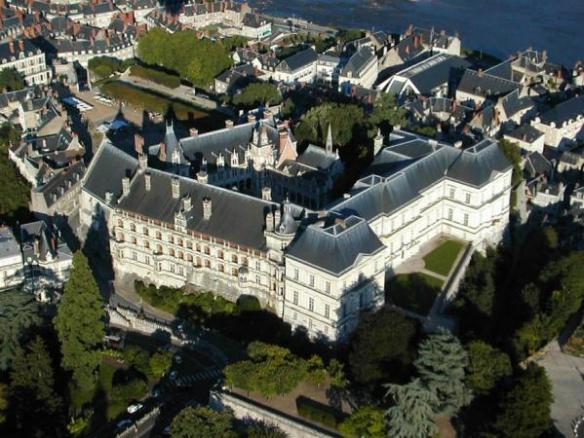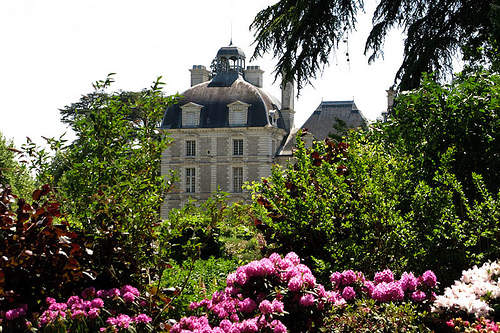Joyeuse fête nationale! Today France celebrates 14th July Bastille Day – the storming of the prison during the French Revolution. The Monarchy may be no more but French glory and history still lives on… in their most sublime and breathtaking châteaux. Frog took me to the Loire Valley to visit the famous châteaux and it was my most memorable trip of France. Enjoy my top 10 châteaux to visit in the Vallee de la Loire!
1. CHATEAU DE CHENONCEAU:
My absolute favorite château in the whole of France because of its beauty and history. Having read the biographies of Catherine de Medici and Diane de Poitiers, this château is nicknamed the “Château des Dames” because King Henry II gave this castle to his mistress Diane de Poitiers, but when he died, his wife, the Queen Catherine de Medici threw out Diane and installed herself there. Everywhere you’ll see the symbols HDC, originally it was H and D entwined and after the King’s death Catherine added her initial C. A must visit!
2. CHATEAU DE CHAMBORD:
Built as a hunting lodge for François I, Château de Chambord is one of the finest examples of the Renaissance architecture in France. It took over 30 years to build during the 16th century. To me, it’s one of the most extravagant châteaux with elaborate rooftop of 800 sculpted columns and over 440 rooms and 85 staircases, making it the largest château in the Loire Valley.
3. CHATEAU D’AZAY-LE-RIDEAU:
Built in the reign of King Francois I (where architecture and arts truly flourished during this Renaissance period), Chateau Azay-le-Rideau is a small and charmingly romantic castle with Italian style architecture. It is hard to believe that it was a defensive fortress in times past because of its beauty.
4. CHATEAU DE CHAUMONT:
Built on the 10th century remnants of a fortress built to protect Blois, the Chateau de Chaumont was built in the years between 1465 and 1510 by Charles I and Charles II d’Amboise. The Château de Chaumont was purchased by Catherine de Medici a year after Henry II’s death. There she entertained numerous astrologers, among them Nostradamus. In 1559 she forced Diane de Poitiers to exchange the Château de Chenonceau for the Château de Chaumont.
5. CHATEAU D’USSE
The Chateau d’Ussé is where Charles Perrault the author of Sleeping Beauty (La Belle au Bois Dormant) was inspired to use this castle as Sleeping Beauty’s castle and later on in Disney- and it’s beautiful. Located on the edge of the Chinon Forest overlooking the Indre River, the chateau sits atop the bank along the river and has terraced gardens.
6. CHATEAU DE VILLANDRY
For those who have a passion for gardens, then Chateau de Villandry is for you as it has the most spectacular gardens! Completed in 1536, the chateau was built in a Renaissance style by Jean le Breton, one of François I’s Finance Ministers. Frog and I had a lovely stroll in the gardens.
7. CHATEAU DE BLOIS:
The Château de Blois sits right at the Blois’ city center. The wings and buildings were built between the 13th and 17th century and they surround a lovely central courtyard. The François I wing houses the chateau’s most famous feature – a spiral staircase. The chateau was the location where the Archbishop of Reims blessed Joan of Arc before her march on Orleans in 1429 and has also served as the residence of many French kings.
8. CHATEAU DE CHEVERNY
Chateau de Cheverny was built the chateau between 1624 and 1630 by Philippe Hurault. Renowned for its exquisite interior which was renovated in 1768, the chateau holds a large collection of tapestries, furniture and artwork.
9. CLOS LUCE
Not exactly a castle, but Clos Luce mansion is connected by an underground tunnel to the castle in Amboise and is where Leonardo Da Vinci lived and worked during the last years of his life. He died in 1519 in his upstairs bedroom. Leonardo was brought to Amboise by King François I who resided in the nearby castle. Here you can walk through Da Vinci’s crazy early inventions recreated by engineers according to his drawings located in the garden and his basement.
10. CHATEAU D’AMBOISE
Dating back to the 11th century, this was taken by the French King Charles VII in the mid-15th century and became a royal palace. François I based his court here and he invited Leonardo da Vinci to move to Amboise (Clos Luce above).





